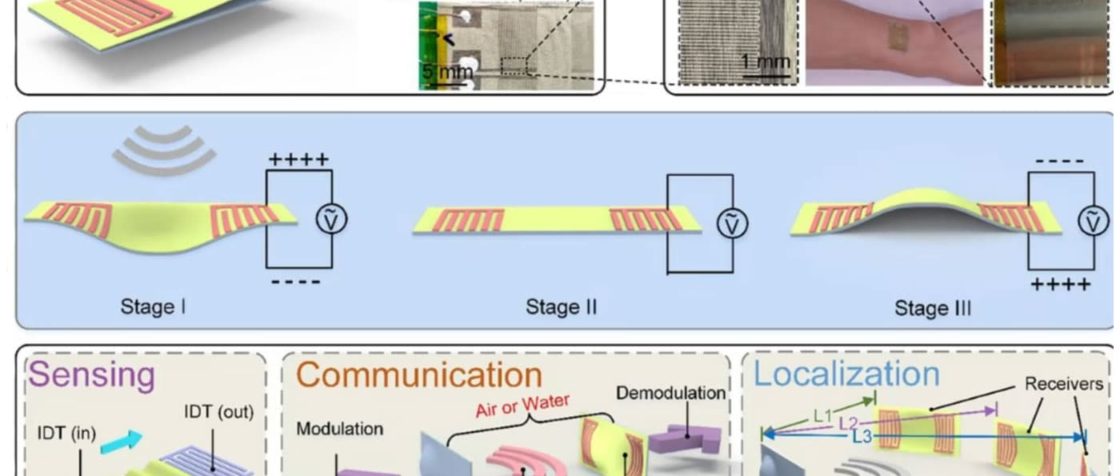
A team of researchers from Northumbria and Zhejiang Universities have developed a wearable sensor capable of wirelessly transmitting information via acoustic waves through air and water.
Wearable sensors currently in use require additional antennas to achieve wireless or real-time functions. Sensors operated with radio frequency signals (RF) can only provide limited positioning accuracy and are often ineffective in underwater conditions. As the new sensors have enough flexibility to be fitted into a wearable patch, the team believes their flexible acoustic wave device could have multiple uses in healthcare and the water industry.
“We feel it is a real breakthrough to have used a multifunctional and flexible sound wave device, operated based on electricity resulting from pressure and heat (piezoelectricity), for achieving integrated sensing, acoustic communication, and positioning functions,” Professor Richard (YongQing) Fu, a professor in the Faculty of Engineering and Environment, University of Northumbria, stated.
In creating a multi-functional device to be used as a wearable patch, the team first identified surface materials that are flexible enough to withstand tiny vibrations capable of transmitting and receiving information. During the lab tests, the sensors were also proven effective through the water. Distance measurement was achieved based on the phase differences of transmitted and received acoustic signals within a range of 100 cm, with a maximum error of 3 cm.
“Based on this new methodology, this type of sensor could serve as an acoustic transmitter and receiver (transceiver) without any additional antenna, thus reducing the complications and size of the system,” Professor Jin Xie at Zhejiang University in China. said. “Because of the low velocity of the acoustic waves, the acoustic ranging and positioning can be directly performed, significantly improving precision when compared to those based on Bluetooth and Radio Frequency Identification (RFID).”
